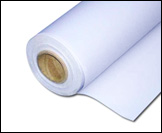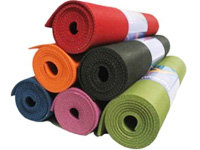| Home > Material > Commonly used Materials > Polyvinyl chloride |
Polyvinyl Chloride(PVC) |
While discussing the commonly used material in the rotomoulding process, no one can possibly ignore Polyvinyl Chloride, abbreviated as PVC. This is a versatile synthetic thermoplastic which is formulated by the process of vinyl chloride polymerization. Among the various generally used material in the rotomolding process, PVC is at the third position, losing to Polyethylene and Polypropylene. Apart from rotomoulding process, Polyvinyl chloride is also widely used in casting and injection moulding process. Its feature of resistance to fire, solvent, stress and chemical compounds make it a versatile material, commonly used in the molding process. Moreover it is very cost-effective and is abundantly available. PVC compounds can be extruded, injection molded, compression molded, and calendered to make end number of products. The rigidity or flexibility of these molded compounds depend on the amount and type of the plasticizers employed in the process.
 Structure:
Structure:
As the name suggests, Polyvinyl chloride is a vinyl polymer having extreme similarities to polythene. The only exception being in its backbone chain, where a chlorine atom surrogates the hydrogen atom on every other carbon atom.
History and Production of Polyvinyl Chloride(PVC):
PVC was discovered twice. In 1912 a a German chemist named Fritz Klatte reacted some acetylene with hydrochloric acid. After overtime polymerization, it formed PVC. The company he was working for did patent the new compound but it 1925 their patent expired as no practical use was ever figured out.
A year later, in 1926, an American scientist called Waldo Semon, working with B.F Goodrich also invented PVC but knowing nothing so as what to do with it they employed it to make shower curtains.
In the modern days, PVC is produced by suspension polymerization. Vinyl Chloride is by far the most widely used production process in the suspension polymerization. In this reaction or procedure, water and VCM are fed into the polymerization reactor, which includes a polymerization initiator. Then, a number of chemical additives are added to start the reaction. Continuous mixing of the contents is ensured for maintaining the suspension and hence ascertaining an even particle size of the PC resin.
Physical Properties:

- Autoclave capable : No
- Coefficient of thermal expansion (linear) [mm/(mm °C)] : 5×10^−5
- Color : Clear
- Compression strength [psi] : 9500
- Effective heat of combustion : 17.95 MJ/kg
- Elongation at break : 20-40%
- Flexural strength (yield) [psi] : 10,500
- Glass temperature : 82 °C
- Hardness : R105
- Melting point : 100–260 °C or 176°F 80°C
- Minimum temperature : -13°F -25°C
- Notch test : 2-5 kJ/m2
- Polyurethane Maximum temperature : 158°F 70°C
- Resistivity [Ω m] : 10^16
- Specific gravity : 1.34
- Specific heat (c) : 0.9 kJ/(kg·K)
- Surface resistivity [Ω] : 10^13–10^14
- Tensile strength : 6,500 psi
- UV Resistance : Good
- Vicat B [°C] : 65–100
- Young's modulus [psi] : 490,000
|
| |
| |
 |
